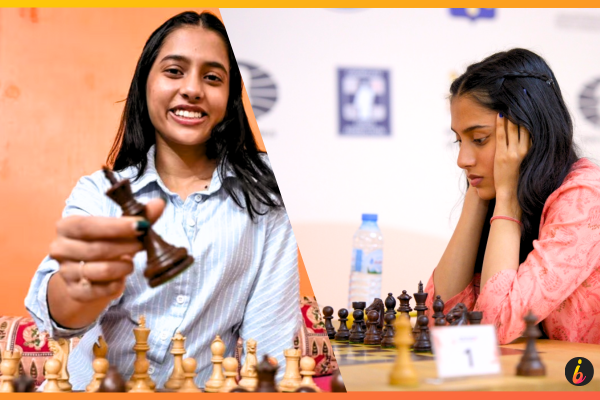In a thrilling display of talent, grit, and nerves of steel, 19-year-old Divya Deshmukh has made history by becoming the first Indian woman to win the FIDE Women’s World Cup. The teenager from Nagpur achieved the unthinkable in Batumi, Georgia, toppling some of the biggest names in women’s chess—including Indian legend Koneru Humpy in a nerve-wracking final.
With this victory, Divya not only brought home one of the most prestigious titles in chess, but also earned the Grandmaster (GM) title, becoming just the fourth Indian woman to do so.
The Rise of a Star
For those who’ve followed Divya’s journey, this win may not come as a complete surprise—but it’s still extraordinary in every sense.
She entered the tournament as the 15th seed, with no Grandmaster norms to her name and a world ranking far below the top contenders. But none of that seemed to faze her. Round after round, she outplayed her opponents with calculated aggression, deep opening preparation, and composure far beyond her years.
Her semifinal win over Tan Zhongyi, a former Women’s World Champion from China, was a statement. But it was her final showdown against Koneru Humpy, a trailblazer in Indian chess, that defined her place in history.

The Final That Changed Everything
The final wasn’t just a clash of generations—it was a clash of legacies. Humpy, a household name and one of the first Indian women to reach the pinnacle of international chess, faced off against the fearless youngster who grew up watching her play.
The classical games were tight, with both players showing immense respect for each other’s abilities. But it was in the rapid tiebreaks that Divya flipped the script. With the Black pieces in the second game, she took control after Humpy made a rare blunder in time trouble. One mistake was all Divya needed. She seized the moment and never looked back.
The score: 1.5–0.5 in Divya’s favor.
A Grandmaster, Finally
This win carries more than just silverware. By clinching the World Cup, Divya earned her Grandmaster title outright—bypassing the need for three GM norms and a 2500 Elo rating. She becomes:
- The first Indian woman to win the Women’s World Cup
- Only the fourth Indian woman Grandmaster
- The youngest Indian woman to achieve this feat via World Cup victory
Her name now joins a select list that includes Humpy Koneru, Harika Dronavalli, and R. Vaishali—icons of Indian chess.
A Moment of Emotion and Legacy
As the final game ended, cameras caught a raw moment. Divya rose from her chair, turned to the audience, and embraced her mother—tears in her eyes. It was a moment that spoke louder than any victory speech ever could.
Later, in an interview, she said:
“I still can’t believe this happened. I didn’t have a single GM norm. Now I’m a Grandmaster. It feels surreal… like this was meant to be.”
It was a personal triumph, yes—but it also represented the dreams of a million young girls who are told that chess, like many things, is not their place.
Why This Win Matters
In the wider context of Indian chess, this win is monumental.
While Indian men’s chess has seen a meteoric rise with stars like Gukesh D, R Praggnanandhaa, and Nihal Sarin, women’s chess had long waited for a breakthrough moment like this. Now, thanks to Divya, the wait is over.
She’s not just India’s first Women’s World Cup winner—she’s now also qualified for the 2026 Women’s Candidates Tournament, which will determine the next challenger for the Women’s World Championship.
The Golden Era of Indian Chess
With Divya’s win on the women’s side and Gukesh’s triumph in the open section earlier this year, India now stands on the threshold of a new era in chess—one where it’s not just competing, but dominating on both global fronts.
This moment is more than a headline—it’s a turning point.
Conclusion: The Crown Fits
What makes Divya’s story so inspiring isn’t just the victory—it’s the journey. A teenager from Nagpur, with no prior GM norms, walked into the world’s toughest women’s tournament and walked out a Grandmaster, a World Cup champion, and a national icon.
She didn’t just win a title—she changed the narrative.
And perhaps, years from now, when the world looks back on the moment Indian women’s chess took flight, they’ll remember the girl who dared to dream—and wore her crown with grace.
